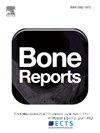细胞结构作为骨髓浓缩物中间充质干细胞浓度的预测工具:对再生医学的影响
IF 2.6
Q3 ENDOCRINOLOGY & METABOLISM
引用次数: 0
摘要
来源于骨髓的间充质干细胞(MSCs)由于其在各种临床环境中促进组织再生的能力,在再生医学中发挥着越来越重要的作用。应用包括骨关节炎的治疗,损伤后的骨再生,以及克罗恩病、脱发和神经系统重建等疾病的治疗。骨髓浓缩物(BMCs)中MSCs的准确定量对于确保这些细胞治疗产品在临床环境中的质量和疗效至关重要。目的定量分析采用本方法制备的BMC中CD271+和CD45−细胞的数量,并为与其他BMC产品进行比较提供依据。此外,我们试图确定骨髓间充质干细胞的总细胞计数是否可以作为骨髓间充质干细胞数量的可靠指标,以及细胞含量(每毫升细胞数量)是否可以预测人群中较高的骨髓间充质干细胞百分比。方法收集41例膝关节或髋关节置换术患者的骨髓抽吸液(BMA)。抽吸液采用密度梯度离心和CD271+细胞阳性选择处理。流式细胞术分析细胞亚群,核计数仪测定细胞计数。评估BMA细胞数量(每ml总细胞数)、MSC浓度(每ml MSC计数)和MSC百分比(总细胞群中MSC的比例)之间的关系。结果骨髓标本中CD271+ CD45−细胞的平均百分比为0.03% (SD为0.03%)。不同样品的细胞数量差异显著,平均为600万个细胞/ml (SD为870万个细胞/ml)。BMC细胞数量与MSC浓度之间存在很强的相关性(p <;0.05),但细胞数量与间充质干细胞百分比之间没有相关性。结论:尽管骨髓间充质干细胞的细胞数量存在很大差异,但骨髓间充质干细胞的浓度与骨髓间充质干细胞的细胞数量密切相关,这表明骨髓间充质干细胞的总细胞计数可以用来估计骨髓间充质干细胞的数量。然而,细胞性并不是MSC含量特别高的指标。本研究支持使用细胞计数作为估计骨髓间充质干细胞浓度的一种措施。未来的研究应侧重于建立与其他BMC产品的直接比较,并探索影响细胞含量和MSC百分比的因素,以提高BMC的临床应用质量。本文章由计算机程序翻译,如有差异,请以英文原文为准。
“Cellularity as a predictive tool for mesenchymal stem cell concentration in bone marrow concentrates: Implications for regenerative medicine”
Background
Mesenchymal stem cells (MSCs) derived from bone marrow play an increasingly important role in regenerative medicine due to their capacity to promote tissue regeneration in various clinical contexts. Applications include the treatment of osteoarthritis, bone regeneration post-injury, and the management of conditions such as Crohn's disease, alopecia, and nervous system reconstruction. Accurate quantification of MSCs within Bone Marrow Concentrates (BMCs) is essential for ensuring the quality and efficacy of these cell therapy products in clinical settings.
Objective
This study aims to quantify the population of CD271+ and CD45− cells in BMCs prepared using the method we have selected and to provide a basis for comparing these results with other BMC products. Additionally, we seek to determine whether the total cell count in BMCs can serve as a reliable indicator of MSC numbers and if cellularity (the number of cells per ml) can predict a higher percentage of MSCs within the population.
Methods
Bone Marrow Aspirates (BMA) were collected from 41 patients undergoing knee or hip arthroplasty. Aspirates were processed using density gradient centrifugation and positive selection of CD271+ cells. Flow cytometry was applied to analyze cell subsets, and cell counts were determined with a NucleoCounter. The relationships between BMA cellularity (total cells per ml), MSC concentration (MSC count per ml), and MSC percentage (the proportion of MSCs within the total cell population) were assessed.
Results
The mean percentage of CD271+ CD45− cells in bone marrow samples was 0.03 % (SD 0.03 %). Cellularity varied significantly among samples, with a mean of 6 million cells/ml (SD 8.7 million cells/ml). A strong correlation was observed between BMC cellularity and MSC concentration (p < 0.05), although no correlation was found between cellularity and the MSC percentage.
Conclusion
Despite high variability in cellularity, the concentration of MSCs correlated strongly with BMC cellularity, suggesting that total cell counts can be used to estimate MSC numbers in BMCs. However, cellularity is not an indicator of a particularly high MSC content. This study supports the use of cell counts as a measure for estimating MSC concentration in BMCs. Future research should focus on establishing direct comparisons with other BMC products and exploring factors influencing cellularity and MSC percentages to enhance BMC quality for clinical applications.
求助全文
通过发布文献求助,成功后即可免费获取论文全文。
去求助
来源期刊

Bone Reports
Medicine-Orthopedics and Sports Medicine
CiteScore
4.30
自引率
4.00%
发文量
444
审稿时长
57 days
期刊介绍:
Bone Reports is an interdisciplinary forum for the rapid publication of Original Research Articles and Case Reports across basic, translational and clinical aspects of bone and mineral metabolism. The journal publishes papers that are scientifically sound, with the peer review process focused principally on verifying sound methodologies, and correct data analysis and interpretation. We welcome studies either replicating or failing to replicate a previous study, and null findings. We fulfil a critical and current need to enhance research by publishing reproducibility studies and null findings.
 求助内容:
求助内容: 应助结果提醒方式:
应助结果提醒方式:


